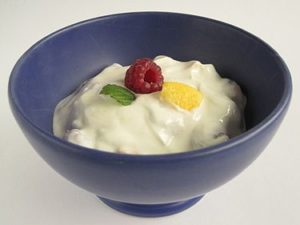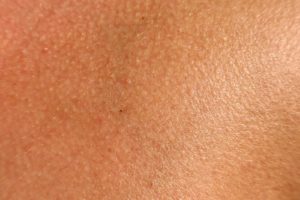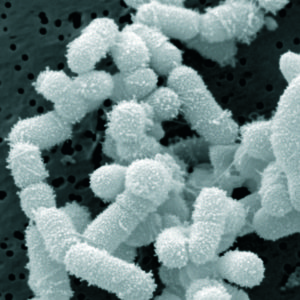Another article stating that the future is feces in treating a number of diseases. From Pacific Standard:
Medicine’s Dirty Secret: Fecal Transplants Are the Next Big Thing in Health Care
POO IS A DECIDEDLY IMPERFECT delivery vehicle for a medical therapy. It’s messy. It stinks. It’s inconsistent, not to mention a regulatory nightmare. But it can be incredibly potent. A classic study of nine healthy British volunteers found that bacteria accounted for more than half of the mass of their fecal solids. That astonishing concentration of microorganisms, both living and dead, makes sense when you consider that the microbial colonists inhabiting our gastrointestinal tract outnumber our own cells roughly three to one, on recent estimates.
In the ideal conditions of the human gut, a thriving ecosystem of 1,000 or more bacterial species that rivals the complexity of a rainforest has co-evolved with us. This microscopic jungle is constantly adapting in response to our diet, antibiotic use and other environmental influences. As the science has progressed, researchers are now comparing the entire collection of microbial inhabitants of the human gut, our microbiome, to a “hidden metabolic organ.” Scientists have linked disruptions to this organ, a condition known as dysbiosis, to everything from inflammatory bowel disease and high blood pressure to diabetes and obesity.
Viewed in this light, a fecal microbiota transplant is nothing more than an attempt to reseed an intestinal tract, often after antibiotics have killed off the native flora that might have kept invasive species at bay. No other medical therapy can claim such a high cure rate for the infection widely known as C. diff.
Some doctors have likened the recoveries of desperately ill patients to those seen with anti-HIV protease inhibitors in the mid-1990s. After the Mayo Clinic in Scottsdale, Arizona, performed its first fecal microbiota transplant in 2011, a patient who had been bed-ridden for weeks left the hospital 24 hours later. And in 2013, researchers in the Netherlands halted a landmark C. diff. clinical trial early for ethical reasons when they saw that the overall cure rate of 94 percent with donor feces had far outpaced the 31 percent cured with the antibiotic vancomycin.
Yet few other interventions elicit such disgust, revulsion, and ridicule. Chronicling a potential advance by a team of Canadian scientists, one newspaper account warned readers: “Hold your nose and don’t spit out your coffee.” In 2013, the founder of a patient advocacy blog called The Power of Poop wrote an open letter to 13 gastroenterology associations detailing the story of a Kentucky man who contracted an acute case of C. diff. Despite his family’s pleas, his doctor dismissed the idea of a fecal transplant as “quackery.” The man died the next day.
Although most providers haven’t published their overall success rates, their self-reported results are surprisingly similar, and consistent with what published reports there are. Khoruts says he has achieved a success rate of about 90 percent after one infusion, 99 percent after two. “In medicine, it’s pretty startling to have therapy that’s that effective for the most refractory patients with that condition,” he says. Colleen Kelly, a gastroenterologist with the Women’s Medicine Collaborative in Providence, Rhode Island, has performed the procedure on 130 patients with recurrent C. diff., with a success rate of about 95 percent. Most of the transplants have taken after just one attempt.
For a relatively simple bacterial infection, Petrof says, the potential remedy may be fairly straightforward. “With recurrent C. diff. what you’ve done is you’ve basically torched the forest,” she says. Nearly everything has been killed off by the antibiotics, leaving very low bacterial diversity. “So the C. diff. can just take root and grow.” Adding back almost any other flora—the equivalent of planting seedlings in the dirt—could help the ecosystem keep interloping pathogens at bay.
For more complicated conditions, though, a simple fecal transplant may not be enough, at least with donors from the Western world. One hypothesis suggests that people in lower-income countries might harbor more diverse bacterial populations in their guts than those who have grown up in a more sterile, antibiotic-rich environment. And in fact, a 2012 study found that residents of Venezuela’s Amazonas state and rural Malawi had markedly more diverse gut microbiomes than people living in three U.S. metropolitan areas. Scientists have already raised the idea that a rise in allergies and autoimmunity in industrialized nations may derive from a kind of collective defect of reduced microbial diversity.
“We cannot find people who’ve never been on antibiotics,” Khoruts says of his donors. For complex autoimmune diseases such as ulcerative colitis, fecal transplants may offer only a partial solution. And with some data suggesting that susceptibility may be linked in part to past antibiotic exposure, perhaps no Western donor can provide the microbes needed to fully reseed the gut.
What then? Khoruts says it may be necessary to seek out ancestral microbial communities—the ones all humans hosted before the advent of the antibiotic era—within people in Africa or the Amazon. “It’s just a disappearing resource,” he says.
By the beginning of April 2014, nearly 30 fecal transplant clinical trials were underway around the world. Roughly half were aimed at C. diff., including two testing the therapy in combination with vancomycin, and another multi-center trial evaluating the effectiveness of fresh versus frozen donor poo.
As the therapy becomes more widely established, via something akin to a “poop pill” or “crapsule,” perhaps the infectious pool of C. diff. patients may start to dwindle. More clinicians, then, might feel emboldened to explore how our bowel flora may affect not only the gastrointestinal system but also the immune and neurological systems. At least a dozen trials are now investigating whether fecal transplants can help treat some form of inflammatory bowel disease, be it Crohn’s disease or ulcerative colitis. Another is looking into Type 2 diabetes, and one is even using lean donors to test fecal transplants on patients with metabolic syndrome. Researchers say it won’t be along before they’re joined by studies investigating whether the therapy might aid diseases like multiple sclerosis and autism.
For those who want to know more, another article form The Pacific Standard:
6 Ways to Transplant Fecal Matter, at Home or at the Hospital
And the following two groups: The Fecal Transplant Foundation
The Power of Poop
 Even though it looks to be a modest effect, it is still good news. But they should have added kefir to the list of probiotic containing foods. From Science Daily:
Even though it looks to be a modest effect, it is still good news. But they should have added kefir to the list of probiotic containing foods. From Science Daily:
 For those who missed it. An amusing and informative personal story (Julia Scott) about trying to cultivate a healthy skin biome. Well worth reading. Excerpts from the May 22, 2014 NY Times:
For those who missed it. An amusing and informative personal story (Julia Scott) about trying to cultivate a healthy skin biome. Well worth reading. Excerpts from the May 22, 2014 NY Times: Yesterday I read and reread a very interesting journal review paper from Sept. 2013 that discussed recent studies about probiotics and treatment of respiratory ailments, including sinusitis. Two of the authors are those from the
Yesterday I read and reread a very interesting journal review paper from Sept. 2013 that discussed recent studies about probiotics and treatment of respiratory ailments, including sinusitis. Two of the authors are those from the  I spent time this past week searching the medical literature (US National Library of Medicine - Medline/PubMed) for the latest in sinusitis research. I wish I could tell you that amazing research has been happening recently, especially with the sinus microbiome (which could mean treating sinusitis with microbes), but I was disappointed. Really disappointed.
I spent time this past week searching the medical literature (US National Library of Medicine - Medline/PubMed) for the latest in sinusitis research. I wish I could tell you that amazing research has been happening recently, especially with the sinus microbiome (which could mean treating sinusitis with microbes), but I was disappointed. Really disappointed.